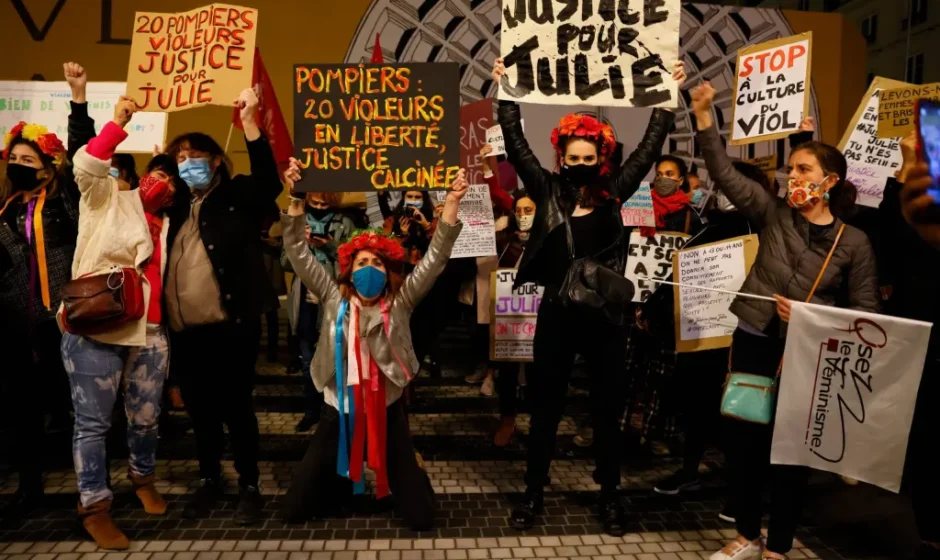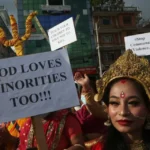Prachi Mishra / New Delhi
Analysis of the Summary of the Final Report on Sexual Violence in the Catholic Church France 1950-2020, issued by the Independent Commission on Sexual Abuse by the Catholic Church (CIASE
- The report presents an overview of sexual violence committed against children and other vulnerable persons systematically by the Catholic Church and its affiliated institutions in France in the last seventy years.

- Based on their findings, the Commission has broadly classified incidence of sexual violence into the following three categories:
- 1950 to 1970 – this period witnessed the maximum number of cases, with incidents rising every year
- 1970 to 1990 – this period saw a fall in the number of incidents of sexual abuse and violence
- 1990 to present – this period witnessed resurgence in the number of cases and incidence of sexual abuse and violence
- The report suggests that prevalence of sexual violence against children was in regions where religious tenets were not followed. The Commission attributed this to lower levels of superintendence of priests and low intolerance for misconduct on behalf of the priests and other clergy. Most cases of abuse and violence have been documented well in such regions.
- As per the report, the victims of the abuse were predominantly pre-adolescent boys from all socio-economic backgrounds. Sexual abuse and violence have been classified into six categories based on the perpetrator:
- Parochial abuse – committed by a local priest;
- School abuse – committed by a priest, theology teachers, and others associated with the Church;
- Educational abuse – committed by scout leaders or patrons;
- Therapeutic abuse – committed by a priest or a Church authority acting as a healer or a psychotherapist;
- Prophetic abuse – committed by Church authorities within the new communities which were popular in the 1970s; and
- Family abuse – committed by a family member or a close family friend

As per the Commission, three tenets of the Catholic Church were used as grounds to exploit children and other vulnerable sections of the society. These are:
- Religious sacraments
- A sense of vocation
- Charity (helping others through the Church)
- The Commission has also recorded sexual violence and abuse against adults committed by the Church. Nuns and seminarists were subjected to violation and exploitation owing to power and control of those who were superior in authority to them.
- The Commission concluded that 330,000 children suffered abuse at the hands of the Church staff including those employed at Catholic schools, persons providing chaplaincy services, scout leaders, Catholic youth movement organizers, and religious members. Of these children, 65% (216,000) were assaulted and violated solely by priests, deacons, and other religious workers of the Church. Over one-third of these cases were committed by laypersons associated with the Church.
- Of the total number of cases of sexual abuse on children, 1.16% were committed by the Church and those associated. The report claims that the share of Church-led abuse is higher than abuse committed in other social set ups. Table 1 highlights these.
Table 1. Percentage share in cases of sexual abuse against children
| Social set up | Percentage share in number of cases |
| Holiday camps | 0.36% |
| State schools | 0.34% |
| Sports clubs | 0.28% |
| Cultural and artistic activities | 0.17% |
| Catholic Church | 1.16% |
- The report suggests that the number of perpetrators of these crimes were between 2900 and 3200. This implies that there were a very high number of victims per perpetrator. A few cases have not yet been investigated and hence the Commission issued a range rather than absolute numbers.
- After investigations, the Commission commented on the attitude of the Church during the last seventy years.
- From 1950 to 1970, the attitude of the Church was to protect itself from such scandals and to save the aggressors. Hence, it concealed the fate of the victims and urged them to stay silent.
- From 1970 to 1990, the Church sidelined the issue of sexual violence at the hands of the clergy and rather chose to address the priesthood crisis, wherein the clergy had begun to dominate internal structures of the Church, monopolizing decision making within the system.
- From 1990 to 2010 the attitude of the Church started to change. It started recognizing the abuse faced by victims and started identifying the victims.
- From 2010 onwards, the Church started reporting these cases to the judicial systems, imposed sanctions on aggressors based on the Canon Law, and acknowledged the fact that dealing with such cases should no longer be an internal matter.
- Why did the Church fail to address these cases of sexual violence against children? The Commission analyzed the structure and working the Church and realized that the shortcomings or inaction was rooted in an archaic Canon Law. As per the law,
- It is important to safeguard sacraments and to reform the sinner;
- The victim holds no importance in the law, hence, there can be no justice for the victim in the systems of the Church;
- Sexual violence is not mentioned in the law, making it ill-fit to repress the incidence of sexual violence.
(Prachi is a research consultant at Center for Integrated and Holistic Studies. Views expressed are author’s own.)



